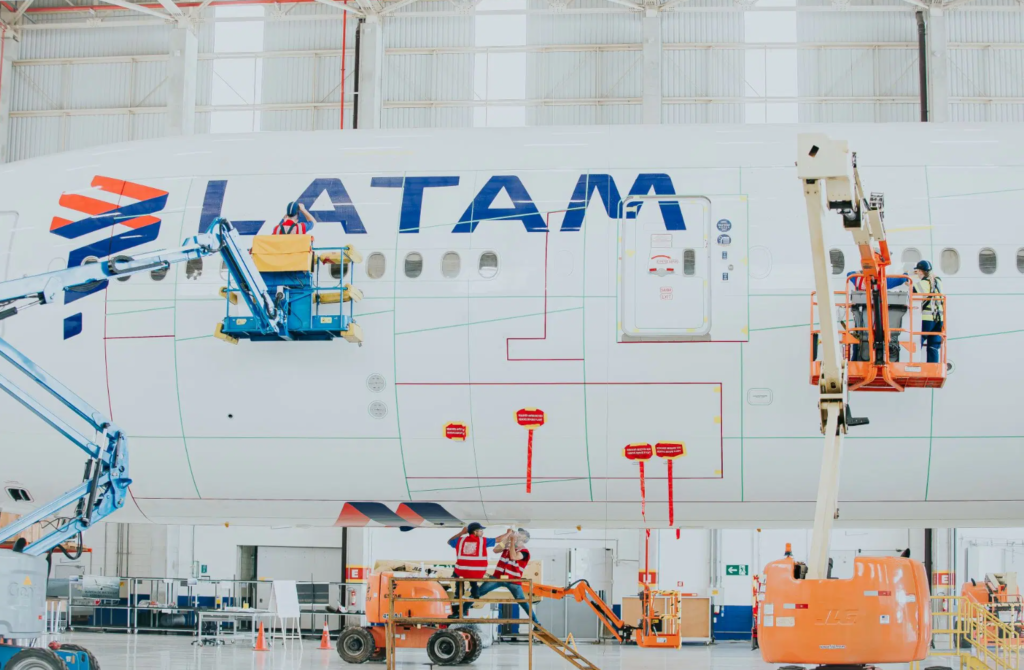Story and Image by Lufthansa Group
Singapore, October 4, 2024 – In December 2023, LATAM had its first Boeing 777-300ER fitted with the bionic surface film in São Paulo, becoming the first airline outside the Lufthansa Group and in the Americas region to adopt this innovative CO₂-saving solution. Since then, the Latin American airline has been testing the sharkskin technology in daily operations. Given the proven results, LATAM has now decided to install the innovative film on four additional aircraft. Five AeroSHARK-modified aircraft operated by the subsidiary LATAM Airlines Brazil will soon be cruising the skies.
AeroSHARK is a surface film that mimics the flow-optimized structure of sharkskin. Developed jointly by BASF and Lufthansa Technik, it features riblets measuring about 50 micrometers. When several hundred square meters of this film are applied to the fuselage and engine nacelles, it reduces drag, leading to a reduction in fuel consumption and CO₂ emissions by around one percent. For LATAM Airlines Brazil’s five Boeing 777-300ER that will be equipped with AeroSHARK, this translates to expected annual savings of up to 2,000 metric tons of kerosene and 6,000 metric tons of CO₂ emissions. This is equivalent to approximately 28 scheduled flights from São Paulo to Miami on a Boeing 777.
Lufthansa Technik’s goal is to support many more airlines around the world in achieving their sustainability goals. The global MRO market leader and BASF are consistently developing AeroSHARK further. Current areas of focus include approvals for ever larger areas on the Boeing 777-300ER and 777F as well as for further aircraft types. The company recently announced to extend the roll-out of the sharkskin technology to Boeing 777-200ER aircraft. Including LATAM’s first modified 777-300ER, a total of 21 aircraft from different airlines worldwide are now in service with the nature-inspired technology – and the number is steadily increasing. The next modification of an aircraft for LATAM is planned in November of this year.
